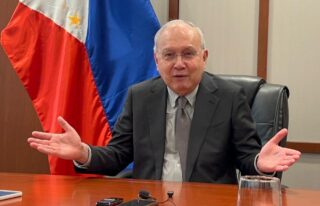The peso is likely to appreciate further into the 41-to-a-dollar territory within the short term given the sustained inflows coming from foreign portfolio investments and remittances from Filipinos overseas.
This was the projection of Barclays, which said the peso could hit 41.50 against the greenback over a 12-month period given the trend of rising dollar inflows.
The international investment bank said the exchange rate forecast took into account expectations that the Bangko Sentral ng Pilipinas would continue to intervene in the foreign exchange market to avoid a much sharper appreciation of the peso.
Although the peso has appreciated by more than 3 percent since the start of the year, the increase was not as fast as those of other Asian currencies, some of which have strengthened by double-digit levels. The peso’s rise, nonetheless, was also not the slowest.
“The BSP’s preference remains to be in the middle of the Asian currency spectrum, rather than an out-performer,” Barclays said in its published commentary on the Philippines.
“In terms of policy, our view is that the central bank aims to manage currency volatility and also remains flexible in order to minimize the outlook for one-way peso appreciation,” the investment bank added.
The peso, which ended 2010 at the 43-to-a-dollar territory, now hovers in the 42:$1 range. This was attributed largely to the sustained rise in remittances and a surge in foreign portfolio funds.
The BSP earlier reported that remittances amounted to $1.74 billion in June, registering the highest amount for any given month. This was up 7 percent from $1.62 billion in the same month last year.
For the first semester, total remittances amounted to $9.63 billion, up 6.3 percent from $9.06 billion in the same period last year.
The central bank also reported earlier that net inflow of foreign portfolio investments reached $2.7 billion from January to July this year, rising 280 percent from only $701 million in the same period last year.
The steep rise in foreign “hot money” was attributed to the anemic growth rates of the United States and European economies and the much faster rate of expansion of Asian economies like the Philippines. The gap in economic performance has prompted portfolio investors to shift their funds to emerging markets.



